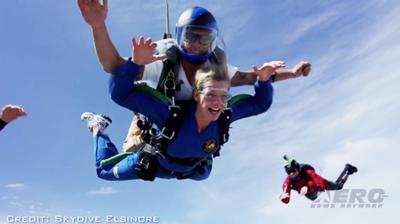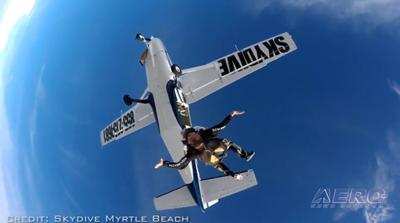Sat, Jan 08, 2022
10 Fatalities Marks Fewest Deaths, Continues Trend Of Increasing Safety
The United States Parachute Association announced with pleasure that the overall safety rate that has been improving year over year has again beat the previous year, with 10 civilian skydiving deaths throughout 2021.

The downswing began in 2018, when deaths dropped to 13, bringing the fatality index to 0.39 out of every 100,000 jumps. The year after saw a rise to 15, until 2020's drop in overall skydiving activity brought the index to mirror to its 2018 record. 2020 saw 11 fatalities, an all time low for the era. Now, 2021's record proves that safety efforts, training programs, and diver proficiency programs are yielding dividends across the country.
The Association has made a goal for 2022, hoping that they can bring overall fatalities into the single-digit range. "Although every life lost is tragic, leaving behind friends and family mourning, there is comfort in knowing that each year skydiving is getting significantly safer. This smaller fatality count is a testament to all the hard work drop zone operators, safety and training advisors, instructors, the skydiving industry and jumpers themselves are performing daily. With a bit of luck and continued vigilance, maybe we can see our first single-digit year next year," they said in a statement commemorating the record.

In December, USPA director of safety and training Ron Bell set out a list of requests for divers, hoping to build on prior successes. Among the targets were goals to increase the level of professionalism among leadership in the hobby, increasing the level of education, respect for the dangers involved, and wariness towards complacency. Bell also requested jumpers learn more about their equipment, saying “”No skydiver is expected to have the knowledge of a Federal Aviation Administration-certified rigger, but every skydiver needs to have a basic understanding of proper packing procedures, equipment checks, how the gear works and how to operate the equipment as it was designed. Improper use of equipment due to lack of education is one of the major contributing factors leading to injury.”
More News
Pilot Applied Full Aft Stick And Nose-Up Trim, But The Airplane Remained On The Runway Analysis: The pilot reported that a preflight inspection and flight control checks revealed n>[...]
A Few Questions AND Answers To Help You Get MORE Out of ANN! 1) I forgot my password. How do I find it? 1) Easy... click here and give us your e-mail address--we'll send it to you >[...]
From 2022 (YouTube Edition): Before They’re All Gone... Humankind has been messing about in airplanes for almost 120-years. In that time, thousands of aircraft representing i>[...]
Advanced Air Mobility (AAM) A transportation system that transports people and property by air between two points in the NAS using aircraft with advanced technologies, including el>[...]
Aero Linx: MQ-1B Predator The MQ-1B Predator is an armed, multi-mission, medium-altitude, long-endurance remotely piloted aircraft that is employed primarily as an intelligence-col>[...]
 NTSB Final Report: Douglas A-4K
NTSB Final Report: Douglas A-4K ANN FAQ: Q&A 101
ANN FAQ: Q&A 101 Classic Aero-TV: PBY Catalina--From Wartime to Double Sunrise to the Long Sunset
Classic Aero-TV: PBY Catalina--From Wartime to Double Sunrise to the Long Sunset ANN's Daily Aero-Term (07.01.25): Advanced Air Mobility (AAM)
ANN's Daily Aero-Term (07.01.25): Advanced Air Mobility (AAM) ANN's Daily Aero-Linx (07.01.25)
ANN's Daily Aero-Linx (07.01.25)




